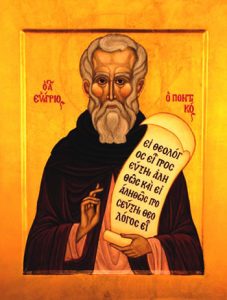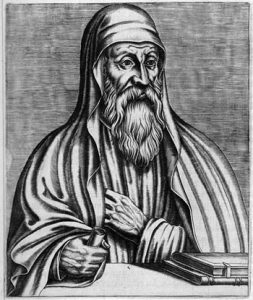A School for Prayer

The Virgin in Prayer, Sassoferrato, c. 1645
By Fr Craig Larkin sm
Introduction
Exploring the Ways of Prayer
Who is this school for?
For people
1. who have been baptised into the life of the Trinity
2. who nourish their lives by pondering the Scriptures
3. who receive the Sacraments regularly
4. who are living a practical Christian life of service of others
5. who live within the Christian Church’s tradition
6. and who are looking for ‘more’ in their relationship with God in Jesus through the Holy Spirit
Some presumptions
1. Prayer is much more about God’s search for us than our search for God.
2. God has revealed himself to us. Our prayer is a response to God’s call.
3. Spirituality is more about experience than about academic study.
4. The two essential things about our life in God are:
DESIRE --
what do you really want? and
RELATIONSHIP --
a personal relationship with God in Jesus
For a Christian, there is one prayer, and that is the prayer of Christ. It’s a prayer that continues in our hearts day and night, and is the fruit of the Holy Spirit living in us.
St Paul’s teaching on morality and mysticism is based on one striking conviction that came from his experience on the road to Damascus: we are ‘temples of the Holy Spirit who dwells in us.’
God is no longer exterior to us; God can be found within. If Christ is really in us, and if we are truly ‘temples of the Holy Spirit,’ then, says Paul:
Do not stifle the Spirit (1 Thess 5:19)
Do not grieve the Spirit (Eph 4.30)
Be directed by the Spirit (Gal 5:26)
The journey of prayer is a journey inwards, to discover and release the Spirit within.
Prayer is not something ‘I do’. It is something that takes place in me. The Holy Spirit prays in me.
So, the Christian mystical ‘return to self’ is very different from the Greek philosophical ‘know yourself.’
Disposing oneself for prayer is important: for this, techniques are useful; they are helps; they teach us to dispose ourselves. But they are not prayer itself.
The art of prayer is not so much learning how to do something, but learning what needs to happen so that the Holy Spirit in me can move freely. It is learning how to establish a state of active receptivity in me.
In this series of articles, we can do this in two ways:
• by consulting our ancestors
• and living by a rule of life for prayer.
Consulting our ancestors
Evagrius of Pontus, who lived from 345 until 399, says:

It is also
necessary to ask about the ways of those who went before us, and to be guided by them. For we find much that was beautiful said and done by them (Prakticos 91), and it is useful for those who want to walk along ‘the way’ to learn from those who previously walked along it and talk with them about what is useful and hear from that what is helpful. (Letters, 17,1)
Origen, who was born in about 184 and died in about 253, suggests:
When talking of prayer, as a way of introduction, it seems to me to be appropriate to examine the interior dispositions and the external postures that the person praying might have, as well as the place where one should pray and the direction in which one must face when praying, and the favourable time that is to be reserv
ed for prayer, and whatever other similar things there may be. (On Prayer 31, 114)
A rule of life
1. We set aside, and are committed to, two periods of prayer each day: one in the morning, and one in the evening. One of shorter time, and one of a longer time: no less than 10 minutes, and no more than 60. We set a time and a rhythm that is reasonable, and we remain faithful to it, under the guidance of our spiritual director.
2. We ensure that we ponder the Scriptures each day.
3. We search for a spiritual director, to whom we entrust our journey.
4. We intercede for each other.
1. The human person in Christ
God and us
God is transcendent – way above images and ideas and concepts. We are creatures, sinful and yet redeemed. We are made in the image and likeness of God. We are damaged goods. Damaged certainly, but good. We have been divinized, called to be like God.
The human person
The human person is composed of body and soul. But within the Christian tradition we are talking of a person baptised into the life of Christ: and so, not only body and soul, but people in whom the Holy Spirit dwells. The human person in Christ is body, soul and the Spirit within.
In the soul – the heart, the will and the intellect
The heart is the source of all human activity. It is where God resides. The will is the seat of our desiring, our wanting, our choosing. The will is weak and easily drawn to what is not good.
Purification of the will is vital. For example, what appears to be zeal may in fact be action motivated by anxiety or the need to be accepted.
The intellect is where we make judgements, where we reason. Wisdom is found in the intellect, and so is self-deception. The heart, the will and the intellect are wounded. They all need transformation.
In the body – memory, imagination, emotions, senses
The memory throws good and bad things at us. Memory deals with the past. Memories can and need to be healed.
The imagination deals with the present and the future. ‘Where the imagination goes, your emotions will follow.’ Purification of the imagination means using the imagination as a friend rather than as an enemy.
The emotions are always connected with memory and imagination. Anger and fear are frequent visitors to our emotional life.
The five senses connect our bodies with the inner world. Nothing that comes through the senses is evil. It depends on how we deal with what comes through the senses.
The key to growth as a human is to return to the heart and to check always, ‘What do I desire?’
The work of the spiritual life involves how to understand the inner workings of our heart, how to direct the desires of our heart, and how to keep those desires on target.
When desire is ordered, everything else changes: our heart expands, our senses get directed properly, choices become clear, we choose yes and no with clarity.
When St Paul prays that ‘Christ may live in your hearts through faith’ (Ephesians 3:16) what does he mean?
Our ‘hidden self’ is the life in the heart. When Christ is living in our hearts through faith, it means that we live conscious that the Spirit is in us; it means living by faith, hope and love, the three theological virtues; it means living by the virtues of prudence, justice, fortitude, temperance, the four cardinal virtues; it means living by the moral virtues of truthfulness, patience, docility, gratitude, affability, equity, clemency, perseverance – and many others.
To be continued
Fr Craig Larkin, a New Zealand Marist, died in 2015
 Entries(RSS)
Entries(RSS)